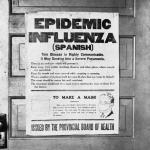“The Terrorism Warning Lights Are Blinking Red Again,” according to former CIA Deputy Director Mike Morell, who delivered that message on CBS’ “
bioterrorism
Not all worrisome infectious diseases target humans. Some target animals, and the consequences can be devastating.
When asked what kept him awake at night, General James Mattis famously answered, "Nothing. I keep other people awake at night." But not everybody is as courageously confident as "Mad Dog" Mattis.
Just like fingerprints, we all have a unique set of behavioral quirks.
In foreign policy, it is difficult to state anything with certainty. Intelligence agencies have sources that journalists do not. As a result, publicly available information is often incomplete.
In its latest weekly report, the CDC details the case of a woman from Arizona who died from tularemia, a rare disease that she acquired from her dog.









